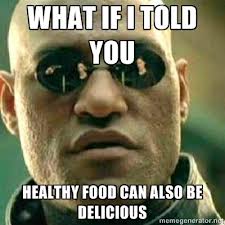no…. not like that kind of alien. 😉
One thing I have learned on my road to feeling better is that supplements can play a key role. There are more supplements out there than grains of sand on the shore, but today I’m going to discuss probiotics.
Q: What are probiotics?
A: They are the beneficial bacteria that live in our gut.
Q: Why have I chosen probiotics to blog about?
A: Because this whole blog has been about my experience, and this is the one supplement (out of many that we are currently taking) that I have evidence is actually making a difference.
I started by making kefir water. Which is super easy and neat and yummy once you have your grains (you might be able to find someone to give you their extras because they multiply.) This will make your gut happy, if your gut ain’t happy, you ain’t happy. (And sometimes you don’t know it’s your gut making you sick!)
The following is a list of the major species of active bacteria and yeasts that are generally found in water kefir:
Bacteria
Species Lactobacillus
L. brevis
L. casei
L. hilgardii
L. hordei
L. nageliiSpecies Leuconostoc
L. citreum
L. mesenteroidesSpecies Acetobacter
A. fabarum
A. orientalisSpecies Streptococcus
S. lactisYeasts
Hanseniaospora valbyensis
Lachancea fermentati
Saccharomyces cerevisiae
Zygotorulaspora florentina
from http://www.culturesforhealth.com/water-kefir-grains-composition-bacteria-yeast
Right now we are taking a probiotic supplement called Florajin 3. It has several beneficial probiotics in it and it has to be refrigerated so the little guys don’t die.
Bacteria (or gut flora) is super important for digestion of food… as in, you can’t digest without it. But recent studies have uncovered a host of other ways that your gut health connects to your overall health. I was planning on just linking to this article, but there is so much good stuff in it that I am going to re-blog it below. (I wonder if that is legal…) The following is cut and pasted from the article “7 Things You Had No Idea Gut Bacteria Could Do” from Mark’s Daily Apple : Primal Living in the Daily World
Read more: http://www.marksdailyapple.com/7-things-you-had-no-idea-gut-bacteria-could-do/#ixzz2zkKGg2C7
We don’t know everything yet – and we probably never will – but here are some of the most interesting and unexpected functions of our gut bacteria:
They learn from each other.
Bacteria are simple, straightforward organisms. They don’t have all the hangups that we mammals do, all the middle men and physiological bureaucracy between “us” and outside information. Bacteria can directly exchange genetic material – defense mechanisms, enzymatic functions, and other characteristics – from other bacteria they come into contact with in the gut. They’re very quick learners operating on an entirely different time scale.
One example: in most Japanese people, certain strains of gut bacteria have picked up the genes for seaweed digestion from the bacteria found on seaweed. The seaweed bacteria itself didn’t colonize the Japanese guts; only the genetic material transferred. Other groups whose gut bacteria weren’t exposed to the seaweed-digesting strains and never picked up the relevant genes have more trouble digesting the seaweedpolysaccharides.
They improve our bone mineral density.
Feeding fermentable fibers to our gut bacteria isn’t just about the short chain fatty acids they produce in response. It’s also about the improved bone health, which occurs through numerous gut bacteria-mediated mechanisms: “increased solubility and absorption of minerals because of increased bacterial production of short-chain fatty acids from prebiotic fermentation; the enlargement of the absorption surface by lactate and butyrate; increased expression of calcium-binding proteins; improvement of gut health; degradation of mineral complexing phytic acid; release of bone-modulating factors such as phytoestrogens from foods; stabilization of the intestinal flora and ecology, also in the presence of antibiotics; stabilization of the intestinal mucus; and impact of modulating growth factors such as polyamines.”
They nullify anti-nutrients.
Phytic acid is an anti-nutrient found in seeds, grains, legumes, nuts, and many other foods. It binds to and prevents the absorption of various minerals, and high phytic acid diets have the potential to cause nutrient deficiencies. Unless you have the right gut flora.
Certain gut flora can actually turn phytic acid into inositol, preventing mineral-binding and releasing a nutrient involved in mood regulation and insulin sensitivity. The more phytate-rich foods you eat, the better your gut bacteria get at breaking it down (they learn, remember?).
There’s also evidence that the right gut flora can reduce the allergenicity of gluten and dairy proteins.
They manufacture vitamins.
When gut bacteria consume substrates, they produce various metabolites, the most famous of which are the short chain fatty acids butyrate, acetate, and propionate. But they also produce vitamins in the process, particularly vitamin K and the B-vitamins. According to Dr. Art Ayers, an optimally-outfitted human gut biome given sufficient dietary substrates can manufacture all the vitamins a person requires.
It seems Vitamin K2, that sweet little variant of vitamin K we love so much, can also be made in the gut. There’s very little direct evidence of this, but broad spectrum antibiotic usage leads to lower levels of vitamin K2 in the human liver. What we do make in the gut can absolutely be absorbed and utilized.
They form a large physical barrier against pathogens.
Bacteria are made of matter, even though they’re invisible to the naked eye. They take up physical space on the gut lining. They plug holes, fill nooks. They cross arms and stand together, steadfast against encroaching pathogens seeking residence. Sheer brute force is one of, if not the most primary immune function of our gut bacteria.
They represent a “second brain.”
The enteric nervous system, found in the gut, has more neurons than the spinal column or central nervous system. Long thought to be only concerned with directing digestive contractions, the enteric nervous system has a direct conduit to the brain: the vagus nerve, 90% of whose fibers are dedicated to communication from the gut to the brain. If you’ve ever gotten butterflies in your stomach from young love or anxiety (or both), or felt like you knew something “in your gut,” that may have been your gut brain relaying the message to your, um, brain brain.
Here’s where the bacteria come in: gut flora produce a ton of neurotransmitters, about 95% of our serotonin and half of our dopamine. Imagine if those voices in our head that seem to originate elsewhere are the result of your gut bacteria coming to a consensus position and delivering it via a chemical slurry of neurotransmitter secretions directly up to your brain? After all, the thoughts we have, the desire we feel, and the words we form come from chemical chatter between neurons. It’s possible that the brain can’t tell where the chatter originates, from “us” or the gut flora. Is there even an “us”? Maybe it doesn’t matter. Maybe “us” is closer to the truth than “me.”
They can make us depressed, anxious, obsessive-compulsive, and even autistic.
Researchers have long noticed that people with disorders “of the mind,” like depression, obsessive compulsive disorder, and autism, tend to also have gastrointestinal issues. It’s becoming clear that these aren’t chance correlations. The emergence of the gut-brain axis, the knowledge that gut bacteria manufacture neurotransmitters, and direct clinical evidence (albeit mostly with non-human animals) suggests that the gut bacteria disturbances are mediating the disorders. We see this in:
- OCD – An emergent hypothesis is that obsessive compulsive disorder is caused by disturbances to the gut biome. In an animal model of OCD, the probiotic L. rhamnosus GG attenuates the symptoms.
- Autism – Treating mouse models of autism with the commensal bacterium B. fragilis restores the integrity of the gut and reduces symptoms, while altering the microbiota to resemble that of autistic mice can trigger symptoms directly.
- Anxiety and depression – Gut bacteria interact with neural pathways involved in anxiety. Replacing the gut bacteria of anxious mice with gut bacteria from fearless mice makes them less anxious, while giving bold mice bacteria from anxious mice makes them more anxious. In human subjects, a probiotic supplement (containing L. helveticus R0052 and Bifidobacterium longum R0175) reduced measures of anxiety and depression.
Gut bacteria help determine the nutrient content of our meals. They mediate our subjective interpretation of everyday life and our interpersonal dealings with others. They’re constantly learning new things and defending us from interlopers and communicating with and perhaps even telling us what to think and how to act. It’s almost overwhelming to even imagine.
Hopefully you’re beginning to understand why the gut biome is shaping up to be the biggest health story of the century and why we ignore it at our peril.
Read more: http://www.marksdailyapple.com/7-things-you-had-no-idea-gut-bacteria-could-do/#ixzz2zkDtoPdr
 PS- If you have been on a dose of antibiotics, it has killed your beneficial bacteria as well as whatever bad bacteria you needed to get rid of. Always do your body a favor and re-establish those good bacteria in your gut once you’re off the antibiotics.
PS- If you have been on a dose of antibiotics, it has killed your beneficial bacteria as well as whatever bad bacteria you needed to get rid of. Always do your body a favor and re-establish those good bacteria in your gut once you’re off the antibiotics.







